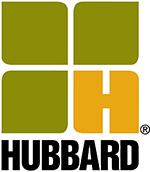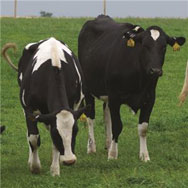
Recently dairy farmers have faced several challenges, and one of the largest of those challenges has been low milk prices, resulting in decreased profits. In these tough economic times, dairymen have had to re-evaluate many aspects of their operation. When evaluating the operation, heifers should not be forgotten. Raising heifers is one of the biggest investments on the farm, but there is no return on that investment until the heifer reaches the milking herd. Heifers play a vital role in the future success of an operation, and tremendous amounts of money can be saved by improving efficiencies in your heifer program without sacrificing performance.
Below are five focus areas for improving the profitability of your heifer program.
1. Determine the appropriate number of heifers for your operation.

Many farms simply have too many heifers. This increase in heifers has resulted from sexed semen and advances in reproductive efficiency, as well as better colostrum and improved calf management. Each farm should determine the necessary number of heifers that are needed for their operation based on their future herd size goals and then add a cushion of three to five percent above that to avoid needing to purchase heifers in the future. The number of heifers necessary depends upon the size of the herd, the cow culling rate, the age at first calving, and the heifer culling rate. In the worst-case scenario, if the farm runs short, they would have to purchase additional heifers in the future — but based on projected heifer prices, this is still more financially sound than raising too many heifers.
Don’t be afraid to cull heifers. Culling can be a difficult decision, but it can also be economically beneficial for your bottom line. Put a plan in place. There are several tools available to help with this decision including genomics, pedigrees, and predicted transmitting ability. Consider culling any heifers with injuries or disease, as they are likely to lag behind and struggle to become profitable. Cull early! Money can be saved by removing the heifer from the herd earlier rather than later when input costs have started to add up. If the farm wants to avoid buying heifers later due to disease risk, heifers can be sold later, but the return may not be as great. You will need to weigh this information against the value of raising a few additional head that may not actually be needed.
2. Strategically use beef semen to improve dairy profitability.
Is there an opportunity to utilize beef semen in your dairy herd? The optimal crossbred beef/dairy calf typically has a higher market value than a purebred dairy calf. There are several different strategies for incorporating beef semen into your operation dependent upon the current farm dynamics and the reproductive status of the farm. Reproductive status tends to be the primary limitation for the incorporation of beef semen use to capitalize on gains from crossbred calves. Generally, farms with high reproductive performance tend to be sensitive to calf prices, and low-reproductive performance farms are more sensitive to semen prices. The “Premium Beef on Dairy” tool from the University of Wisconsin–Madison dairy management website uses market price, along with several other variables, to help determine the optimal strategy based on the farm’s inventory and goals. One strategy uses sexed semen on genetically superior cows, while beef semen is used on lower-producing cows. Heifer availability should not be forgotten when considering or using beef semen, as more utilization may also necessitate the purchase of more replacements.
Crossbreeding strategies present an opportunity to add value to extra calves since, as previously mentioned, crossbreds are typically valued more highly than purebred dairy calves. Several different beef breeds cross well with dairy breeds, but it is important to note that, like dairy bulls, not all beef bulls are created equal. This strategy warrants careful consideration when determining which beef bull to use on your operation to maximize potential.
3. Set heifers up for success.
Once the ideal number of heifers has been determined, set them up for success by getting them off to a running start during the pre-weaning period. To maximize efficiency, provide optimal nutrition that will help minimize any disease that may set the heifers back. Do not forget about colostrum. Ensure that calves receive adequate amounts of high-quality colostrum quickly after birth, as this will maximize their immunity and decrease their susceptibility to disease. Work with your nutritionist to develop a nutrition program that meets your growth and weaning goals by balancing a quality milk replacer/whole milk and starter. Do your best to keep disease to a minimum in order to maximize growth and intake, helping heifers smoothly and successfully transition to the next grower phase without setbacks.
After weaning, minimize stressors so the heifer can maintain efficient growth. Heifers must first meet their maintenance requirements to sustain body status. Keeping heifers in a low-stress environment (which includes factors like weather/temperature and stocking density) can reduce maintenance costs and allow more energy to be more efficiently partitioned toward growth. Utilize organic trace mineral nutrition to optimize the true potential of your replacement heifers throughout all stages of your heifer-rearing program.
4. Minimize shrink.
Feed shrink doesn’t only apply to the lactating herd! Shrink should be managed not only in storage and handling, but also at the bunk. Often, large amounts of feed are wasted because of poor handling techniques, so spend extra time considering bunker management. Remain aware of feed delivery and how much heifers are being fed. This includes keeping track of any weigh-backs, getting heifer dry matter intakes dialed in, and pushing up feed to minimize waste.
5. Re-evaluate heifer rations.
Build heifer diets around forages and evaluate other ration ingredients to ensure the ration is cost-effective. As long as they are providing adequate nutrients to meet growth goals, heifer rations do not need to be complicated. To meet growth goals, average daily gain should typically fall between 1.8–2.0 pounds per day. Heifer growth should include both weight gain as well as lean tissue growth. Heifers that gain weight too quickly will accumulate fat tissue that will interfere with future production potential, so there must be a balance between energy and protein supplied. Another opportunity for savings is to avoid overfeeding vitamins and minerals. Vitamins should be fed according to NRC guidelines. Producers should consider utilizing high-quality mineral sources, such as organic trace minerals, which are more bioavailable to animals and can be fed at lower levels while still offering growth, immunity and health benefits for overall long-term performance.
Raising your own replacement heifers gives your dairy operation the opportunity to increase efficiencies and improve savings and profitability. It is important to understand that inputs in your heifer program today will determine the quality and production capabilities of those same animals once they become part of the milking string. Work with trusted professionals to define farm goals and identify opportunities to maximize profitability on your operation. Contact your local Hubbard Feeds representative for further guidance and assistance in monitoring herd progress.
References:
https://hoards.com/article-24510-heifer-hoarding-raising-too-many-heifers-is-not-a-good-thing.html
https://www.progressivedairy.com/topics/a-i-breeding/pick-a-straw-conventional-sexed-or-beef-semen
http://www.dairymgt.info/tools.php


